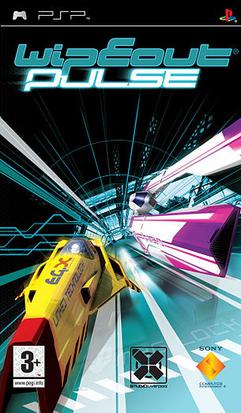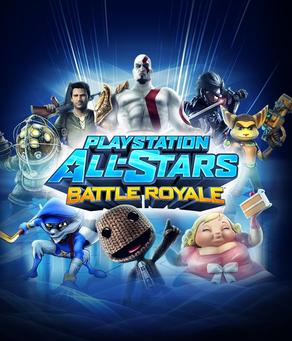Wipeout is a series of futuristic anti-gravity racing video games developed by Studio Liverpool.

Sony Interactive Entertainment LLC (SIE) is an American multinational video game and digital entertainment company of Sony. Established in 2016, it primarily operates the PlayStation brand of video game consoles and products.

Wipeout 2097 is a racing video game developed and published by Psygnosis. It is the second installment released in the Wipeout series and the direct sequel of the original game released the previous year. It was originally released in 1996 for the PlayStation, and in 1997 for Microsoft Windows and the Sega Saturn. It was later ported by Digital Images to the Amiga in 1999 and by Coderus to Mac OS in 2002.

Wipeout 64 is a 1998 futuristic racing game developed by Psygnosis and published by Midway for the Nintendo 64. It is the third game in the Wipeout series and remains the only one published on a Nintendo console. At the time of the game's release, developer Psygnosis had been owned for five years by Sony Computer Entertainment, for whose hardware all subsequent Wipeout games have been released exclusively.

Wipeout Fusion is a futuristic racing video game developed by Studio Liverpool and published by Sony Computer Entertainment for the PlayStation 2. It is the fifth instalment in the Wipeout series and was released in February 2002 in Europe, and in June for North America. It was the first Wipeout game to be published on the PlayStation 2. The game takes place in 2160 and revolves around players competing in the F9000 anti-gravity racing league.

Wipeout Pure is a futuristic racing video game developed by Studio Liverpool and published by Sony Computer Entertainment for the PlayStation Portable. It was released in 2005 on 24 March for North America, on 7 April in Japan and on September 1 in Europe. In North America and Europe, it was a launch title for the platform.

Psygnosis Limited was a British video game developer and publisher headquartered at Wavertree Technology Park in Liverpool. Founded in 1984 by Ian Hetherington, Jonathan Ellis, and David Lawson, the company initially became known for well-received games on the Atari ST and Amiga. In 1993, it became a wholly owned subsidiary of Sony Computer Entertainment (SCE) and began developing games for the original PlayStation. It later became a part of SCE Worldwide Studios. The company was the oldest and second largest development house within SCE's European stable of developers, and became best known for franchises such as Lemmings, Wipeout, Formula One, and Colony Wars.

Tim Wright, known professionally as Cold Storage, is a Welsh video game music composer most known for his work in video game soundtracks such as Shadow of the Beast II, Agony, Lemmings, Wipeout and Colony Wars.

Wipeout 3 is a futuristic racing video game developed by Psygnosis exclusively for the PlayStation. The title is the fourth game in the Wipeout series, and was released in Europe and North America in September 1999. Players control anti-gravity ships and use weapons to force other contenders out of the race.

Wipeout is a racing video game developed and published by Psygnosis. It is the first game in the Wipeout series. It was originally released in 1995 for PlayStation and DOS, and in 1996 for Sega Saturn, being a launch title for the PlayStation in Europe. It was re-released as a downloadable game for the PlayStation 3 and PlayStation Portable via the PlayStation Network in 2007.

Wipeout Pulse is a futuristic racing video game developed by Studio Liverpool and published by Sony Computer Entertainment for the PlayStation Portable. It was released in December 2007 in Australia and Europe, and in February 2008 in North America. A PlayStation 2 port was released in Europe in June 2009. The game is the seventh installment of the Wipeout series and serves as a sequel to Wipeout Pure. It takes place in 2207 and revolves around players competing in the FX400 anti-gravity racing league.

Wipeout HD is a futuristic racing video game developed by Studio Liverpool and published by Sony Computer Entertainment for the PlayStation 3. It is the eighth installment of the Wipeout series and was first released on the PlayStation Network on 25 September 2008 in both Europe and North America, and on 29 October in Japan. A major expansion pack titled Wipeout HD Fury was released worldwide via the PlayStation Network worldwide on 23 July 2009. A retail version was later made available in Europe on 16 October. Both Wipeout HD and its HD Fury Expansion are playable in 3D when connected to a 3D TV.
Creative Vault AB is an independent video game developer based in Gothenburg, Sweden. The company was founded by Staffan Langin and Olof Gustafsson in the summer of 2005 with the desire to develop games for multiple platforms. Its first game was Crash Commando (2008), an online shooter for the PlayStation 3. In 2012, Gustafsson left the company, which was renamed Creative Vault Studios. Under the guidance of Langin as sole CEO, the company has worked on several projects with Sony Interactive Entertainment, beginning with the virtual reality port for Hustle Kings in 2016. The following year, the studio collaborated with XDev and Clever Beans on Wipeout Omega Collection, a remaster of Wipeout HD, Wipeout HD Fury, and Wipeout 2048.

PlayStation Studios is an American division of Sony Interactive Entertainment (SIE) that oversees the video game development at the studios owned by SIE. The division was established as SCE Worldwide Studios in September 2005 and rebranded as PlayStation Studios in 2020.
Sony has released a number of previously released PlayStation video games, remastered in high-definition (HD) for their newer consoles, a form of porting. A number of related programs exist, the most prominent two being "Classics HD" and "PSP Remasters". The former consists of multiple PlayStation 2 games compiled on one Blu-ray Disc. The latter are individual PlayStation Portable games republished on Blu-ray. These games are not direct ports, but remastered versions in high-definition, to take advantage of the newer consoles' capabilities. The remastering of the games include updated graphics, new textures, and Trophy support, and some of the remastered games released on PlayStation 3 have included 3D and PlayStation Move support. Some HD remasters have also been released individually or in bundles as downloads on the PlayStation Store; others are released exclusively as downloads.

PlayStation All-Stars Battle Royale is a 2012 crossover fighting video game developed by SuperBot Entertainment, in conjunction with Bluepoint Games, and published by Sony Computer Entertainment. It features various characters drawn from different PlayStation video game franchises competing against each other in multiplayer battles. The game was released in November 2012 for the PlayStation 3 and PlayStation Vita video game consoles.

The PlayStation TV, known in Japan and other parts of Asia as the PlayStation Vita TV or PS Vita TV, is a microconsole, and a non-handheld variant of the PlayStation Vita handheld game console. It was released in Japan on November 14, 2013, and Europe and Australia on November 14, 2014.

Firesprite is a British video game developer formed in 2012 by former members of Studio Liverpool based in Liverpool. In September 2021, Sony Interactive Entertainment acquired the company, making them a first-party developer for PlayStation Studios.

Wipeout Omega Collection is a 2017 futuristic racing video game compilation co-developed by XDev, Clever Beans and Creative Vault Studios and published by Sony Interactive Entertainment for the PlayStation 4. It was first released in North America on June 6 2017 and in Europe a day later.

















